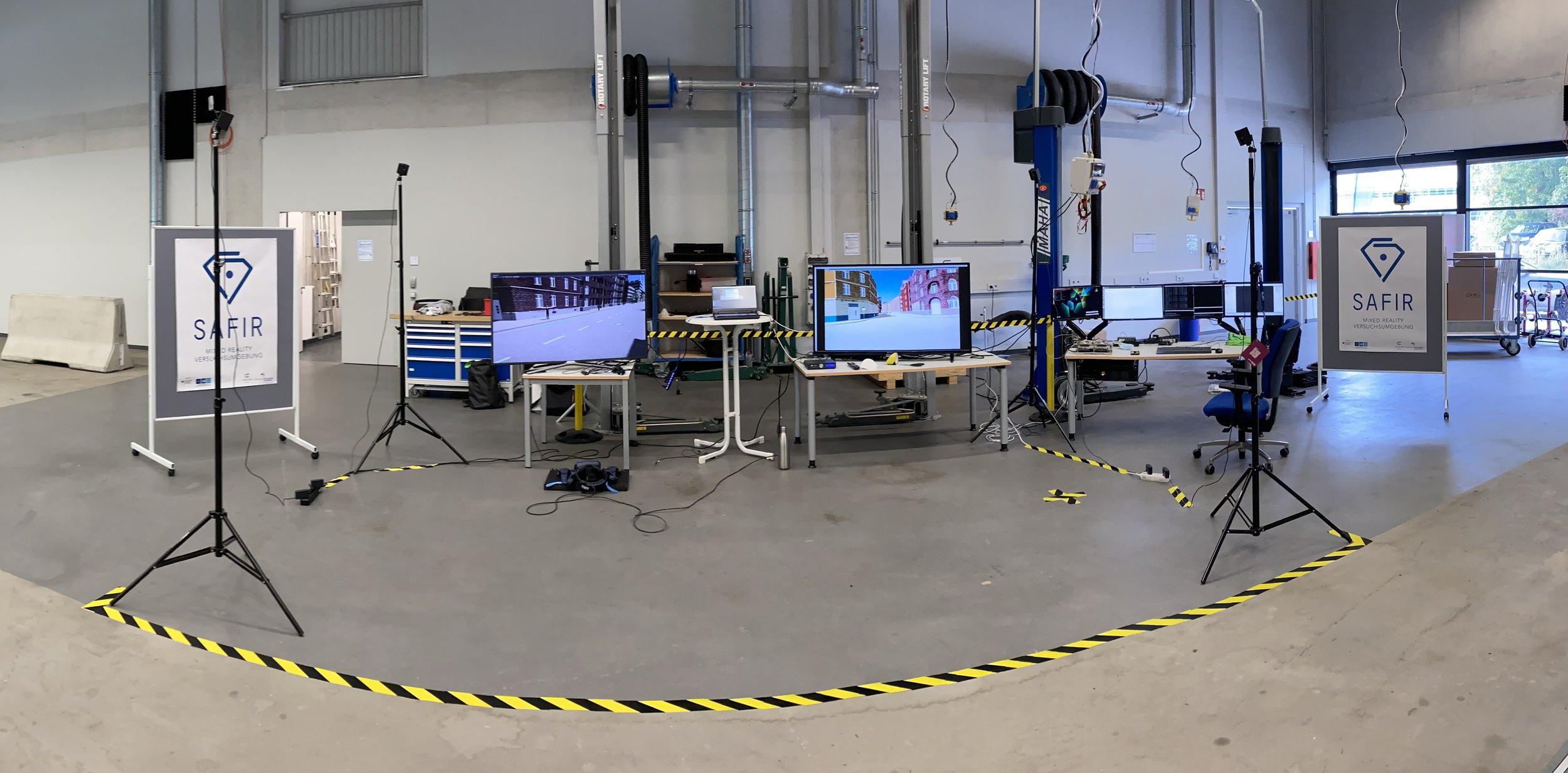
MiRE
A Mixed Reality Environment for Testing Automated Driving Functions.
Concept and Architecture
Real pedestrian walking inside Virtual Reality to generate naturalitstic behavior and motion data.
Digital twins of the two agents meet in a common simulation environment (Unity) and interact based on real-world data.
Dynamic Vehicle in the Loop drives on the test track and streams movement data in realtime.
Combining these elements into one common test environment architecture, real and simulated components can interact in realtime with each other.
By doing this, the effort for repeated testing is significantly reduced, while fidelity is increased compared to fully simulated tests.
MiRE is a proof-of-concept for this method.
The architecture is based on the Open Simulation Interface (OSI). By using an open standard for interfacing between modules, the architecture is transparent and open source. With OSI version 3.6.0, through our contribution, exchanging pedestrian data via OSI is now possible.
Publications
MiRE, A Mixed Reality Environment for Testing of Automated Driving Functions
Maikol Funk Drechsler* and Jakob Peintner*, Fabio Reway, Georg Seifert, Andreas Riener and Werner Huber. 2021. MiRE, A Mixed Reality Environment for Testing of Automated Driving Functions. In IEEE Transactions on Vehicular Technology, vol. 71, no. 4, pp. 3443-3456, April 2022, doi: 10.1109/TVT.2022.3160353.
Jakob Peintner, Maikol Funk Drechlser, Carina Manger, Georg Seifert, Fabio Reway, Werner Huber, Andreas Riener. 2022. Comparing Different Pedestrian Representations for Testing Automated Driving Functions in Mixed Reality Environments. In IEEE International Conference on Vehicular Electronics and Safety (ICVES). Bogota, Colombia. pp. 1-7, https://doi.org/10.1109/ICVES56941.2022.9986669
How Simulation based Test Methods will substitute the Proving Ground Testing?
Maikol Funk Drechsler, Georg Seifert, Jakob Peintner, Fabio Reway, Andreas Riener, and Werner Huber. 2022. How Simulation based Test Methods will substitute the Proving Ground Testing?. In IEEE Intelligent Vehicles Symposium (IV), Aachen, Germany, 2022, pp. 903-908, doi: 10.1109/IV51971.2022.9827394.



